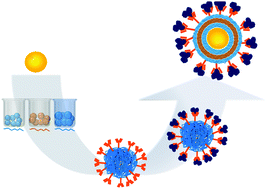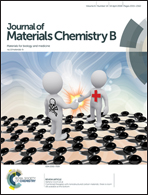The functionalization of natural polymer-coated gold nanoparticles to carry bFGF to promote tissue regeneration†
Abstract
Gold nanoparticles (AuNPs) enable the treatment and real-time monitoring of several diseases, providing an exciting and advantageous nanomedicine strategy. These NPs have therefore been adequately functionalized to enable them to carry growth factors (GF), namely basic fibroblastic (bF) GF, which play an essential role in different and important cellular processes including cellular proliferation, survival, migration and differentiation. The AuNPs were coated with natural polymers, chitosan and heparin, to enhance their physicochemical properties such as suspension stability. The polyelectrolyte coating was monitored using a quartz crystal microbalance with dissipation, size and zeta-potential analysis. The natural polymer-coated AuNPs have a spherical shape and a positive surface charge due to chitosan amino groups, enabling their biofunctionalization with monoclonal antibodies to target specific biomolecules. Additionally, cellular assays with the chondrocyte cell line ATDC5 show that the NPs are cytocompatible at relevant concentrations. As a proof of concept of their potential application in tissue regeneration, the natural polymer-coated AuNPs were further functionalized with an antibody to selectively bind the desired GF. The bFGF concentration reached in the NPs without compromising the cytocompatibility demonstrates the potential of this carrier for tissue regeneration.



 Please wait while we load your content...
Please wait while we load your content...